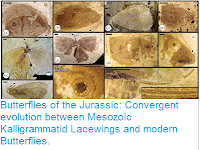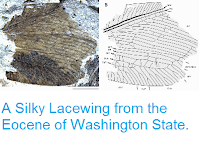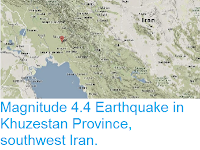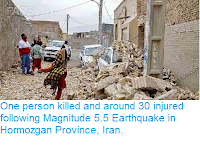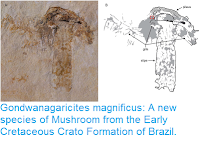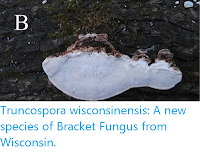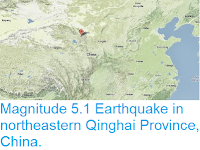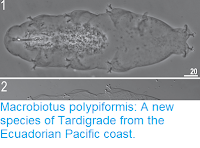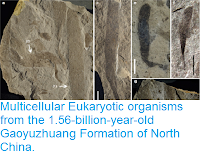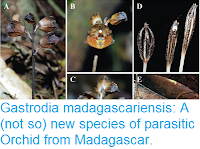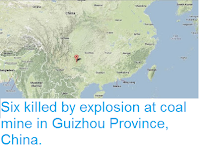People have speculated about the possibility of life on other planets for almost as long as they have been aware that other planets exist. With increasing technological capabilities, it is thought that we will be able to look for life on other planets within the next few decades. Before this is done, however. It is sensible to attempt to estimate how widespread life might be in the Universe, and where it is most likely to be found. There are two factors which affect this, namely the origin of life on planets, and its disappearance. We know that life arose on Earth between 4.0 and 4.5 billion years ago, though we do not fully understand how it occurred, hampering attempts to estimate how likely the same thing is to occur somewhere else. We also know that the history of life on Earth has been subject to a series of major extinction events, at least one of which is attributed to an astrophysical event (the End Cretaceous Extinction, which is widely thought to have been caused by the impact of a large extra-terrestrial body into the Yucatan Peninsula in Mexico. There has also been significant speculation about other astrophysical events causing extinction events, though as yet no evidence for this has been found, and the likelihood of such events happening at all is unclear.
In order to do this, they examined the energy levels needed to wipe out the toughest known group of organisms on Earth, Tardigrades, which are far more likely to survive any such events than more delicate organisms such as Humans, and which could potentially evolve into a range of new organisms occupying other ecological roles in the aftermath of a major extinction event. Tardigrades have been shown to survive temperatures between −272 °C and 150 °C, and can survive sustained periods of time at −20 °C. They can survive exposure to the vacuum of space, and are found living at the bottom of the Marianas Trench, where the pressure reaches about 1200 atmospheres. They can also survive exposure to radiation levels of ∼5000–6200 Gy (enough energy to endow every kilogram of matter with 5000-6200 Joules of energy).
Firstly, Sloan
et al. examined the possibility of a large impact event wiping out all life on Earth. While this is thought to have been the trigger mechanism for the End Cretaceous Extinction, and large impacts have the capability to cause an impact winter, lethal to large terrestrial animals and very bad news for anything dependent on photosynthesis, either by itself or its food, that cannot survive without any energy input for at least several years, it is far less threatening to marine organisms, particularly those which form part of the food-chains based upon chemosynthesis found around deep sea vents. In order to wipe out Tardigrades and other organisms at the bottom of the ocean trenches, Sloan
et al. estimate that an asteroid would have to have a mass in excess of 1700 billion megatonnes (note that this is significantly larger than the estimated size needed for an impactor to completely remove the Earth’s atmosphere, as it requires far more energy to heat water than air; a smaller impact could potentially remove Earth’s atmosphere but not its oceans, enabling a new atmosphere to form from the evaporation of the upper layers of the oceans).
An artist's impression of a gigantic asteroid impacting an Earth-like planet. Don Davis/NASA.
The Solar System currently contains seventeen known asteroids larger than this limit, plus several Dwarf Planets. It is thought that there were more such bodies in the early Solar System, and that at least one body did impact the Earth (leading to the formation of the Moon), but the majority these are thought to have disappeared early in the history of the system (a period called the Early Bombardment), and Sloan et al. calculate that the possibility of such an impact happening to Earth later in the history of the Solar System (or to any Earthlike planet in a reasonably similar system) is in fact vanishingly small, even over periods of billions of years.
Secondly Sloan
et al. consider the possibility of life on Earth being wiped out by a nearby supernova. Supernovae are spectacular events, occuring at the end of the life of massive stars, which generate sufficient gravity to fuse elements heavier than boron, then are blown apart by the energy released. The release of energy from a giant star exploding is, fairly obviously, quite significant, and has been suggested several times as potential trigger for extinction events. However most of the energy from such an event is released in a spherical shockwave, which quickly dissapates as the wave expands.
An artist's impression of an Earth-like planet being destroyed by a supernova. NASA.
Sloan
et al. calculate that in order for a supernova to exterminate all life on Earth, it would have to occur within 0.04 parsecs (0.13 light years) from us, less than a thirtieth of the distance to the current nearest star, Proxima Centuri. The nearest star thought to be large enough to undergo a supernova at the end of its life, IK Pegasi, is about 45 Parsecs (147 light years) away. While the stars do move, and at different points in time other stars are likely to have been closer than Proxima Centuri
et al. do note that stars are more densily packed towards the core of the Galaxy, and that there the risk of a supernova occuring close to a planet with life on would be somewhat higher; they estimate that a life-bearing planet in sich a situation would have a 1% chance of being completey sterilized by a supernova during the course of its life.
Next Sloan
et al consider the possibility of Earth, or an Earth-like planet being knocked out of its orbit by the tidal influence of a passing star. This is another theoretical possibilty that has been proposed in the past, both by serious scientists and science fiction writers, but which has not previouslt been analysed statistically. Sloan
et al. calculate that at the density of stars in our part of the galaxy, there is a one in 300 000 000 chance of this happening for each billion years of a planet's life, but that in the more densely packed galactic core this will rise to 1 in 1 000 000 per billion years of an Earth-like planet's life.
Sloan
et al. do note that one astrophysical event is almost certainly likely to wipe out life on Earth in the end, that being the eventual death of out star, the Sun. At the end of its life the Sun is expected to expand significantly as it uses up its hydrogen reserves, the fusion of which prevents it from collapsing to far under its own gravity, and contracts till it is sufficiently dense to begin fusing helium, at which point it will release more energy from each fusion event, and expand significantly. This may result in the Sun expanding sufficiently to engulph the Earth, or to steralize its surface. Alternatively, if the Sun does not expand this far, it will eventually run out of fuel completely and cool, causing Earth to freeze irreperably, again killing any surviving life.
The surface of a future Earth is likely be sterilized by an expanding, superheated Sun. Alamy.
However there is a third (albeit rather unlikely) scenario, in which an expanding Sun pushes the Earth out of its orbit, causing it to become a rogue planet, drifting through space without an accompanying star. While this would clearly be cataclismic to life on the planet's surface, Sloan
et al. suggest that life around hydrothermal vents, now at the bottom of a shrunken ocean burried beneath a thick ice cap, could potentially survive for a few tens of millions of years, with a (very) slight chance that the drifting planet might be captured by another star in this time, enabling life tore-emerge.
See also...





